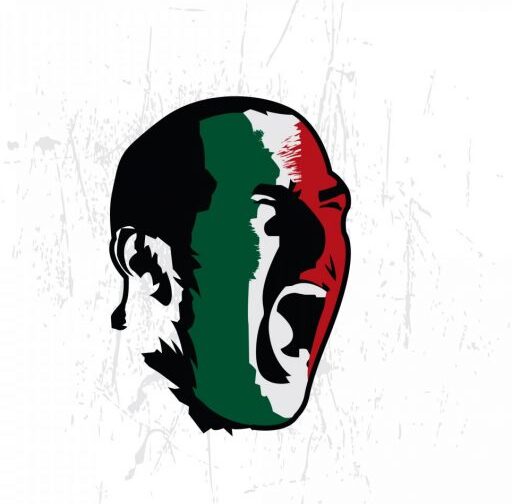Napoli may now be one of Italian football’s major forces, but this has not always been true, as the club were long sufferers of a turbulent existence

It is rare that a club can reference its nickname as a perfect metaphor for itself. However, with Napoli, Campania’s answer to the Phoenix, this is exactly the case. The club are also known as the Partenopei, a nickname which stems from Parthenope, a Greek mythological creature.
Parthenope played the role of a siren, best described as a simultaneously beautiful but dangerous creature. According to legend, Parthenope cast herself off into the Bay of Naples after her songs failed to entice the Greek king Odysseus, subsequently drowning with the new city named after her. Myth or truth, Parthenope’s legend lives on in both story form and as a metaphorical representation of the city’s club, S.S.C. Napoli.
How is that, I hear you ask? Well, the tragedy of Parthenope originally stems from her initial beauty and promise. Napoli rose to prominence during the mid-1960s. Their side of that era featured future World Cup winner Dino Zoff, the dedicated Antonio Juliano, and an ageing but gifted Omar Sívori, the Partenopei regularly challenged for the title. But it ultimately eluded them. In 1975, they lost fewer games than champions Juventus but finished two points behind them.
This theme of near misses continued for some time: until 1984 to be precise. Then, Napoli’s president at the time, Corrado Ferlaino, decided to throw an unprecedented sum of money (£6.9m) at a man named Diego Maradona.

The move for the Argentine superstar was so seismic that local politician Vincenzo Scotti was called in to use his connections in the banking industry to get the club a significant loan to complete the deal. Maradona’s acquisition proved to be worth its weight in gold.
In 1987, Napoli finally won their first Scudetto, becoming the first and still the only team from the south to win Serie A. Spontaneous street parties, mural-painting, and other festivities continued for weeks. Mock funerals were held for AC Milan and Juventus. The atmosphere was electric. All before Napoli went on to win the Coppa Italia, where they beat Atalanta 4-0 in the final.
A double delivery to the city, Maradona subsequently became an adopted son. Newly-born boys within the city were named Diego in his honour. It was a level of happiness and achievement that the city and its people had never experienced.
This golden era of success was formally rubber-stamped into the history books with the club’s second Scudetto in 1990, following the capture of the UEFA Cup in 1989, which remains the club’s only continental triumph. Maradona, already immortalised, was joined by a young Gianfranco Zola, the tough and consistent Ciro Ferrara, and the clinical Careca in Neapolitan footballing heaven.
Unfortunately for the Neapolitan people, their honeymoon was as short as it was sweet. By 1994, all of the aforementioned had left the club. Relegation to Serie B occurred just 8 years after the second Scudetto. The club made a net loss of €28 million in 2002, and the club was declared bankrupt by 2004 with debts estimated up to €70m.

With disaster impending, along came one Aurelio Di Laurentiis, a wealthy film producer who didn’t want to see his hometown club fall victim to financial mismanagement.
He refounded the club under a different name, placing them in Serie C1. Spurred on by a playoff defeat in his first season of ownership to local rivals Avellino, Napoli slowly climbed up the divisions. By 2009, the Campanian side were competing in European competition again. Since, they have gone from strength to strength.
In 2013, Napoli had their best season since 1990’s Scudetto triumph, playing some spectacular attacking football with the likes of Edinson Cavani, Marek Hamsik, and a young Neapolitan named Lorenzo Insigne. In 2015-16, Napoli pushed Juventus all the way to the title, ultimately stumbling at the later stages, but the city’s love affair with the club continued.

The story of Napoli is, therefore, a turbulent affair. One thing that has remained constant through the years of ups and downs has been the city’s relationship with the team. For so long, Napoli have represented the Southern Italian spirit; fight, persistence, and resilience against all odds.
Ever since the unification of Italy in 1870, the North and South have conflicted over cultural, economic and social differences. The South has historically suffered from Mafia influence and high taxes and has lagged economically behind the industrialised North. The divide is often so extreme that Southern Italians are still often labelled “peasants” and “donkeys” by the North. Almost considered outsiders, this has only strengthened the bond between the club and the city in which it operates.
A newspaper in the 1980s aptly pointed out, the city lacked a mayor, buses, sanitation, schools, houses and employment, but it had its football team. The club represented the people, and that is all that mattered. It still does.
The story of the Partenopei is, therefore, one of intense love and immeasurable pain in equal measure. The highs have been incredible, but the lows have been harrowing.
In a sense, the club’s story has been a repeated tragedy, with as many ups and downs as is possible in a football club.
The difference between the myth of Parthenope, though, and the Napoli story, is perhaps only that the club is still alive. It has been close to death before, but has emerged from this experience ever stronger.
Given its importance to Neapolitans, and the lift it provides to the region, it is a real representation in the purest form of the magical impact of football on everyday lives.


